The media industry is experiencing profound shifts driven by technological innovation, changing consumer preferences, and the ever-growing battle for audience attention. As traditional media models are challenged by new, more personalised, and on-demand content, media companies face both significant challenges and opportunities. Fragmentation in audience behaviour, the rise of digital platforms, and evolving revenue models are forcing companies to rethink their strategies in order to remain competitive.
Four key trends are expected to disrupt the media landscape in 2025: the rise of AI-generated content, the dominance of niche streaming platforms, the rise of creator-led media ecosystems, and the expansion of immersive media experiences. Each of these trends is reshaping how content is created, distributed, and consumed, driving the media industry towards more efficient, personalised, and interactive solutions.
Trend 1: The Rise of AI-Generated Content
AI tools are revolutionising the content creation process, from scriptwriting and video production to real-time translation and voiceovers. These advancements are enabling faster production timelines, reducing costs, and providing more personalised content. AI-generated media is quickly becoming a mainstream solution across industries, empowering smaller creators and businesses to produce high-quality content with limited resources.
The disruption caused by AI-generated content is multi-faceted:
- Reduces production costs and timelines, levelling the playing field for smaller creators: With AI tools, content production is faster and more affordable, making it possible for smaller creators to compete with larger, established media companies. For example, AI-generated text and video content can reduce the time required for scriptwriting and video editing, cutting production costs by up to 30% for smaller productions.
- Raises ethical questions about authenticity and copyright in content: As AI-generated content becomes more prevalent, questions about the ownership of content and intellectual property are gaining importance. Who owns AI-generated media, and how can the authenticity of such content be verified? These are ongoing debates that will affect not only content creators but also traditional media companies and advertisers.
- Forces traditional media companies to adapt workflows or risk falling behind: With the rise of AI-generated content, established media companies must innovate or risk being left behind. This shift requires them to reassess their workflows, investment strategies, and how they integrate AI tools into their production processes. A 2023 study by PwC found that 45% of media companies are already using AI to improve content creation, with an expected 20% annual increase in AI integration through 2025.
The speed, efficiency, and cost-effectiveness AI brings to content creation will force media companies to adapt their traditional workflows to remain competitive. As the market evolves, AI-generated media will likely continue to play a dominant role in shaping the future of the media industry.
Case Study: Synthesia – Revolutionising Video Content Creation with AI
Synthesia is an AI-driven video production platform based in the United Kingdom that is transforming the way videos are created and consumed. The platform enables users to generate high-quality videos using AI avatars, eliminating the need for traditional video production teams, voiceovers, and expensive equipment. With applications spanning training, marketing, and social media content, Synthesia is democratising video creation, making it more accessible and cost-effective for businesses of all sizes.
Synthesia is a prime example of how AI is reshaping content creation, particularly in video production. Traditional video production requires multiple resources, such as cameras, studios, editors, and voice actors. With Synthesia, businesses can bypass these logistical hurdles and produce engaging, personalised videos at scale, reducing both time and cost. This AI-generated content trend is disrupting the media industry by offering an automated solution to one of the most resource-intensive areas of content creation—video production.
Technology and Impact
Synthesia’s AI platform uses machine learning to generate realistic human avatars that can speak multiple languages and convey messages in a natural, human-like manner. Users can simply input a script, select an avatar, and produce a fully formed video in a fraction of the time it would take with traditional production methods.
- Efficiency: Video production time is reduced from weeks to just a few hours, enabling businesses to create content quickly and in multiple languages without the need for voice actors or on-location shoots.
- Cost Reduction: Synthesia’s platform eliminates the need for expensive video equipment and editing teams, offering an affordable solution for companies looking to scale their content production.
- Personalisation: Businesses can tailor content for different audiences and markets with ease, leveraging AI to generate multiple versions of a video with localised messaging.
One notable example of Synthesia’s impact is its partnership with IBM, where the company utilised Synthesia’s technology to create AI-powered training videos for employees. These videos were produced in multiple languages, enhancing the global accessibility of the training materials without requiring additional voiceovers or manual translations.
In another example, PepsiCo used Synthesia to create localised marketing campaigns across multiple regions, enabling the brand to produce high-quality content faster and at a fraction of the cost of traditional video shoots.
Synthesia exemplifies how AI is transforming content creation by making video production more efficient, accessible, and affordable. By removing barriers to entry, such as high production costs and lengthy timelines, Synthesia is opening up opportunities for businesses to scale their video content while maintaining personalisation and quality. This shift in how content is created aligns perfectly with the broader trend of AI-generated media, which is set to become a mainstream solution for businesses looking to remain competitive in an increasingly fast-paced media landscape.
By leveraging AI tools like Synthesia, companies can not only streamline their workflows but also adapt to the growing demand for faster, more personalised content in the media industry.
Trend 2: The Dominance of Niche Streaming Platforms
As consumer preferences become increasingly fragmented, niche streaming services are thriving by offering hyper-personalised content that caters to specific genres, interests, and demographics. These platforms focus on creating curated content that speaks directly to loyal, engaged audiences, setting them apart from mainstream streaming giants. While platforms like Netflix and Amazon Prime dominate the global streaming market, niche services have carved out their own space by tailoring offerings to meet the needs of particular groups, whether through genre-focused content, cultural specificity, or unique entertainment needs.
Why This Will Disrupt:
- Challenges the dominance of mainstream platforms by creating targeted appeal: Niche streaming platforms are challenging the widespread appeal of larger services by zeroing in on specific genres or cultures, providing a more focused and personalised viewing experience. As of 2023, niche streaming services are gaining ground, with some platforms growing their user bases by 50% year-over-year through targeted offerings.
- Shifts revenue models toward subscriptions and community-driven funding: Many of these platforms are shifting their revenue models from ad-based to subscription-driven, tapping into a dedicated audience willing to pay for exclusive content. This trend is especially visible in platforms focusing on niche genres like horror, anime, or independent films, where users are more willing to support content they feel personally connected to.
- Forces traditional broadcasters to rethink how they connect with fragmented audiences: The success of niche platforms is forcing traditional broadcasters to rethink their strategies and adapt to the demand for specialised content. As audience fragmentation continues, broadcasters will need to reevaluate their programming and content distribution to stay relevant in an ever-more segmented market.
In 2025, niche streaming services are expected to continue their rapid growth, offering unique and highly tailored content that appeals to a specific fanbase. As this trend continues, traditional streaming platforms and broadcasters will have to rethink their approach to content creation, production, and audience engagement to compete in an increasingly fragmented media landscape.
Case Study: Shudder – Dominating the Horror Streaming Space
Shudder is a niche streaming platform based in the United States that focuses exclusively on horror, thriller, and supernatural content. Launched in 2015, the service has successfully built a loyal and engaged user base by offering a curated library of genre-specific movies and series. Unlike mainstream streaming platforms like Netflix, which offer a broad range of genres, Shudder’s dedication to the horror genre has allowed it to carve out its own space in the streaming market.
Shudder is a prime example of the growing dominance of niche streaming platforms that focus on specific genres or demographics. By focusing solely on horror, Shudder is able to offer a highly personalised and tailored viewing experience for its passionate audience. In an era when mainstream platforms struggle to cater to all tastes, Shudder’s hyper-focused content has allowed it to thrive by serving a dedicated fan base that craves specific genre content. This makes it a perfect illustration of how smaller, niche platforms are gaining traction and challenging larger platforms in terms of engagement, loyalty, and revenue.
Technology and Impact
Shudder’s ability to thrive in a crowded streaming market is thanks to its strong focus on curated content and its use of technology to cater to niche interests:
- Curated Content: Shudder’s content library features a mix of classic horror films, independent horror movies, and exclusive originals, ensuring that it offers something for every horror fan. The platform regularly updates its catalogue, introducing seasonal content and exclusive releases that keep its audience engaged.
- Community Engagement: By leveraging social media and horror communities, Shudder has developed a sense of community among its users, fostering loyalty and word-of-mouth marketing. Horror fans feel like they are part of a niche, like-minded group, which enhances the platform’s appeal.
- Tech Integration: Shudder uses algorithms and user feedback to suggest tailored content to its subscribers, increasing viewer satisfaction and keeping audiences engaged with new content based on their viewing history.
Impact and Growth
- Subscriber Growth: As of 2022, Shudder has surpassed 1 million subscribers globally, a significant milestone that highlights the growing demand for specialised, genre-specific content.
- Exclusive Content: The platform’s original programming, such as Creepshow, The Last Drive-In with Joe Bob Briggs, and Shudder’s Horror of the Month series, has been key in differentiating it from other platforms and creating a unique viewing experience. These exclusives have helped attract horror fans looking for fresh, original content.
Challenges and Future Outlook
- Expansion and Competition: While Shudder has experienced significant growth, it faces increasing competition from both traditional platforms, adding horror content and newer niche players emerging in the genre. To remain competitive, Shudder must continue to expand its offerings while retaining the strong community it has built.
- Balancing Growth with Identity: As Shudder grows, it will be challenging to maintain its identity and niche focus while scaling up its subscriber base and content offerings. The platform must ensure that it remains true to its horror roots while accommodating the evolving tastes of its audience.
Shudder’s success in dominating the horror streaming market is a perfect example of how niche platforms are thriving by catering to a specific, loyal audience. By focusing on curated, high-quality content and fostering community engagement, Shudder has not only survived but thrived in an increasingly fragmented media landscape. As consumer preferences continue to fragment, Shudder’s success demonstrates the growing appeal of niche platforms and their potential to disrupt traditional, mainstream streaming services.
Trend 3: Creator-Led Media Ecosystems
The creator economy is revolutionising the media industry by reshaping how content is produced, distributed, and monetised. Platforms like Patreon, YouTube, and Substack have enabled individual creators to bypass traditional media channels and build direct relationships with their audiences. This shift is enabling creators to take control of their content, set their own terms, and access new revenue streams, disrupting the traditional media landscape where publishers, broadcasters, and agencies are the primary gatekeepers.
The rise of creator-led media ecosystems brings both opportunities and challenges:
- Decentralises media production, reducing reliance on traditional gatekeepers: Creators now have the tools and platforms to produce, distribute, and monetise content without the need for large media companies or traditional publishing houses. This democratisation of content production allows for a wider range of voices and perspectives, giving rise to diverse, niche content.
- Redefines advertising and sponsorship opportunities with micro and niche audiences: Creators are now able to build highly engaged, niche audiences that are difficult for traditional media outlets to match. Advertisers are increasingly looking to work with creators who have authentic, loyal followers rather than large-scale, impersonal reach. The ability to cater to micro-niches provides brands with more targeted and effective advertising opportunities.
- Challenges media companies to innovate their talent acquisition and content strategies: As creators gain more influence, traditional media companies must adapt to keep up. To stay competitive, broadcasters and publishers need to rethink their content strategies, talent acquisition, and distribution methods, embracing more flexible, creator-centric approaches. Media giants must also adjust to the growing demand for on-demand, authentic content.
In 2025, creator-led media ecosystems are expected to continue to thrive, offering personalised, niche content that traditional media companies struggle to provide at scale. This trend is redefining how content is created, shared, and monetised, and traditional companies will need to innovate quickly or risk losing their relevance in an increasingly decentralised media landscape.
Case Study: Bigo Live – Revolutionising Creator-Led Media Ecosystems in Southeast Asia
Bigo Live, founded in Singapore in 2016, is a live-streaming platform that allows creators to broadcast live content and receive real-time gifts, tips, and donations from their audience. Over the years, Bigo Live has evolved into a major player in the creator economy, especially in Southeast Asia, by offering creators a direct way to monetise their content through fan interaction and engagement. Unlike traditional media platforms, Bigo Live empowers individual creators to build and nurture their communities while earning revenue from their content.
Bigo Live is a perfect example of how the creator economy is transforming media production and consumption. By enabling creators to monetise their content directly through live-streaming and audience donations, the platform decentralises the media production process, bypassing traditional media gatekeepers. This aligns with the shift toward creator-led media ecosystems, where individual creators have more control over content creation, distribution, and monetisation.
Technology and Impact
- Real-Time Interaction: Bigo Live allows creators to engage with their audience in real-time, fostering a sense of community and personal connection. The live interaction aspect is a key feature that sets the platform apart from pre-recorded content.
- Monetisation Model: Creators earn revenue through virtual gifts, tips, and paid subscriptions from their viewers. Bigo Live’s integration of real-time gifting encourages continuous engagement and makes the monetisation process seamless.
- Global Reach: While Bigo Live was founded in Singapore, its reach spans across Southeast Asia, the Middle East, and beyond. The platform’s ability to adapt to different markets by supporting local languages and preferences has contributed to its rapid growth.
Content Creators’ Success: Bigo Live has enabled numerous creators to turn live streaming into a full-time career. For instance, creators in Southeast Asia have earned thousands of dollars per month through real-time gifts and sponsored content, building large and dedicated fanbases. One notable example is a popular Indonesian live streamer who has garnered millions of followers and makes a significant income through gifts and tips during live broadcasts.
Challenges and Future Outlook
- Competition: While Bigo Live is a major player in Southeast Asia, it faces competition from platforms like Twitch, YouTube, and local services, which are also focusing on live streaming and creator monetisation.
- Regulatory Issues: As the platform expands, it must navigate varying regulations around content, online safety, and financial transactions in different countries, which could affect its operations.
Bigo Live is revolutionising the way creators engage with their audience, allowing for a more direct and profitable relationship between content creators and their fans. The platform exemplifies how technology is enabling the rise of creator-led ecosystems, empowering individuals to take control of their content and revenue streams. By fostering real-time interaction and offering an integrated monetisation model, Bigo Live sets a strong example for how live-streaming can thrive in the rapidly evolving media landscape.
Trend 4: Immersive Media Experiences
The media landscape is undergoing a dramatic transformation as advances in augmented reality (AR) and virtual reality (VR) redefine how content is consumed and interacted with. With the rise of immersive technologies, media experiences are becoming more interactive, offering audiences new ways to engage with content. From virtual concerts and live events to AR-enhanced news reporting and branded experiences, the boundaries of audience engagement are being pushed, creating exciting new possibilities for both entertainment and marketing.
As AR and VR technologies become more accessible, the traditional media consumption model is shifting. Audiences are no longer passive viewers; they are active participants in the stories unfolding around them. This shift is opening up new opportunities for storytelling, experiential marketing, and deeper audience connection.
Why This Will Disrupt:
- Changes how audiences consume and interact with content: Immersive experiences allow audiences to engage with content in more interactive and personalised ways. Virtual reality offers a level of immersion that traditional media cannot match, whether it’s exploring a 360-degree concert experience or walking through a virtual world for an interactive film.
- Creates new opportunities for storytelling and experiential marketing: VR and AR offer media companies and brands innovative ways to tell stories and engage customers. For example, VR can take viewers into the middle of the action in a way that traditional media, like television or film, simply cannot. AR, on the other hand, can overlay digital elements on the real world, creating an interactive layer that brands can use for experiential marketing campaigns.
- Requires significant investment in technology and creative talent to deliver high-quality experiences: While the potential for immersive media experiences is vast, creating them requires considerable investment in both technology (AR/VR hardware and software) and creative talent (3D artists, interactive designers, etc.). The industry will need to evolve quickly to ensure the development of high-quality, engaging experiences that are accessible to mainstream audiences.
As these immersive media experiences become more commonplace, they will not only reshape entertainment but also have broader implications for education, tourism, gaming, and even shopping. By 2025, the expectation is that immersive technologies will become mainstream tools for engaging audiences, offering deeper and more personalised interactions than ever before.
Case Study: VR Experiences by National Geographic – Pushing the Boundaries of Immersive Media
National Geographic, a leading media brand known for its educational content on natural history, exploration, and science, has embraced virtual reality (VR) to create immersive experiences that transport users to some of the world’s most remote and fascinating locations. Through its VR projects, National Geographic offers users the ability to dive into the ocean floor, explore the surface of Mars, or witness historical events from an entirely new perspective. This cutting-edge use of VR is designed not only for entertainment but also to educate, providing a deeper, more engaging experience than traditional media formats.
National Geographic’s VR initiatives are a perfect example of how immersive media technologies like VR are reshaping content consumption. By utilising VR, National Geographic is able to deliver content that goes beyond passive viewing. Rather than just showing viewers footage of a subject, VR places them within that environment, creating a sense of presence that engages audiences on an entirely different level. This trend aligns perfectly with the growing demand for interactive and immersive media experiences that offer more dynamic and participatory storytelling.
Technology and Impact
- Virtual Reality Experiences: National Geographic’s VR experiences utilise cutting-edge technology to create 360-degree, fully interactive environments. From underwater explorations of the Great Barrier Reef to a first-person journey through Mars’ landscape, these experiences offer users a sensory immersion into places and experiences that would otherwise be impossible to access.
- Educational and Emotional Engagement: The VR projects have been praised for their ability to emotionally engage users, particularly in educational contexts. For example, by diving into the ocean floor to witness coral reefs, users can gain a firsthand understanding of the impact of climate change. This level of immersion enhances the educational value of the content.
- Accessibility: National Geographic’s VR experiences are available across multiple platforms, including Oculus Rift and HTC Vive, making them accessible to a wide audience. This approach ensures that the immersive experiences can reach users regardless of their physical location, further broadening the scope of the brand’s educational impact.
One of the most popular VR experiences from National Geographic, “Sea of Shadows”, takes viewers on an underwater adventure to witness the challenges faced by marine life. Users virtually dive into the ocean to explore coral reefs, observe marine species, and learn about conservation efforts in real-time. This experience provides more than just visuals—users can interact with the environment, gaining insights into the underwater ecosystem’s fragility and beauty, which traditional media formats cannot fully convey.
Challenges and Future Outlook
- Scaling Immersive Content: While National Geographic’s VR experiences have been widely celebrated, producing high-quality VR content requires significant investment in technology, talent, and resources. Scaling this type of content to reach broader audiences without compromising quality remains a challenge for the media company.
- Consumer Adoption: While VR technology has grown in popularity, it still faces barriers to widespread adoption, such as hardware requirements and cost. National Geographic will need to continue innovating to make VR content more accessible and user-friendly.
National Geographic’s VR experiences represent a major leap forward in how immersive media is transforming both entertainment and education. By offering users the ability to explore the world in ways that were previously unimaginable, National Geographic is enhancing storytelling, increasing audience engagement, and providing educational value through cutting-edge technology. As VR continues to evolve, it will play a key role in pushing the boundaries of media experiences, offering even more innovative and impactful ways for audiences to interact with content.
Final Thoughts
These trends—AI-generated content, niche streaming platforms, creator-led ecosystems, and immersive media experiences—are driving a wave of innovation that is reshaping how media is created, distributed, and consumed. The ability to harness emerging technologies and cater to ever-evolving consumer preferences has opened new opportunities for brands to engage audiences in more personalised, immersive, and interactive ways. As the media industry continues to evolve, staying ahead of these trends is crucial for maintaining relevance in a fragmented, competitive landscape.
For media companies, the key to thriving in this environment lies in embracing agility and innovation. Those who adapt quickly to the changing dynamics of content consumption and audience expectations will be best positioned to succeed. The future of media is rapidly transforming, and those who understand these shifts can capitalise on the new possibilities emerging in the space. To stay informed about these disruptive trends and how they’re shaping the future of the media industry, subscribe to Connecting the Dots, our monthly e-newsletter. Stay ahead of the curve, stay inspired, and lead the change in your industry.
Get regular insights
Keep up to date with the latest insights from our research as well as all our company news in our free monthly newsletter.


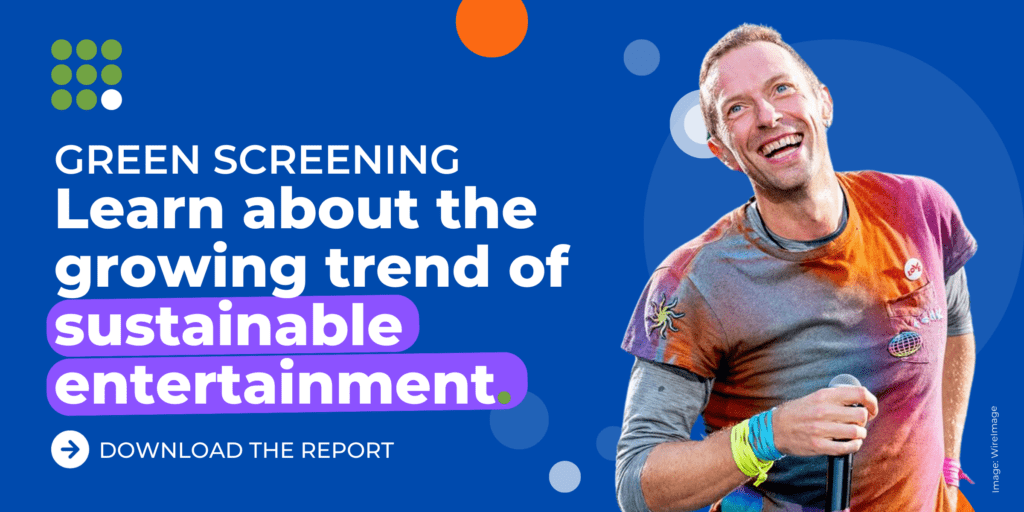






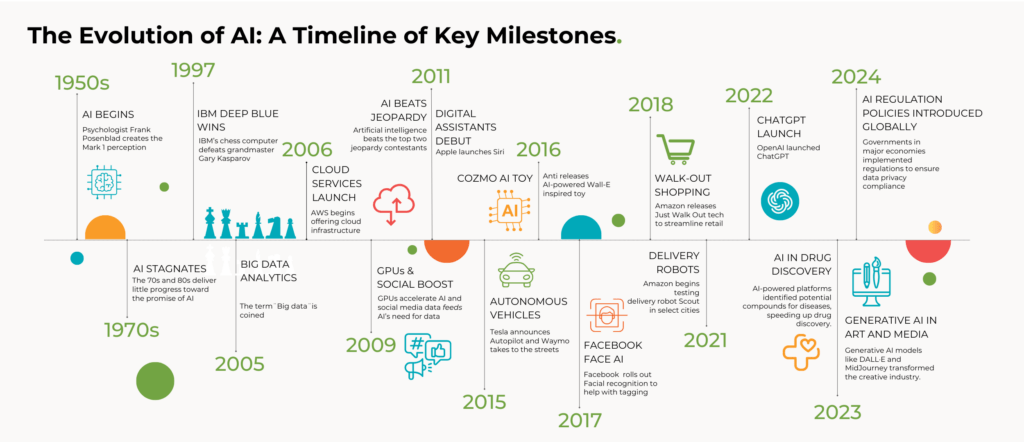
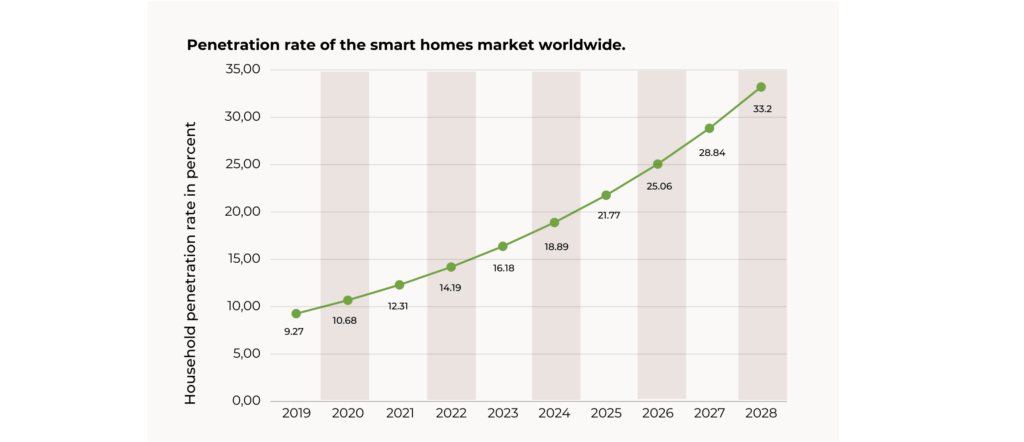
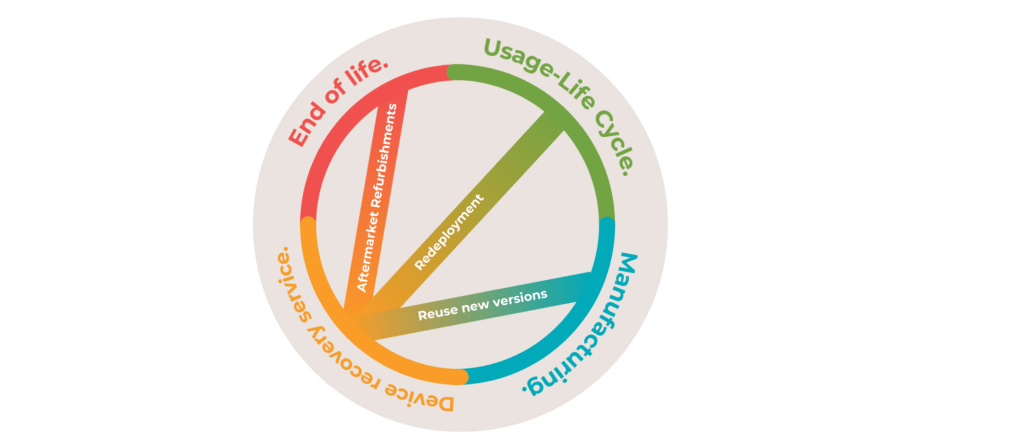
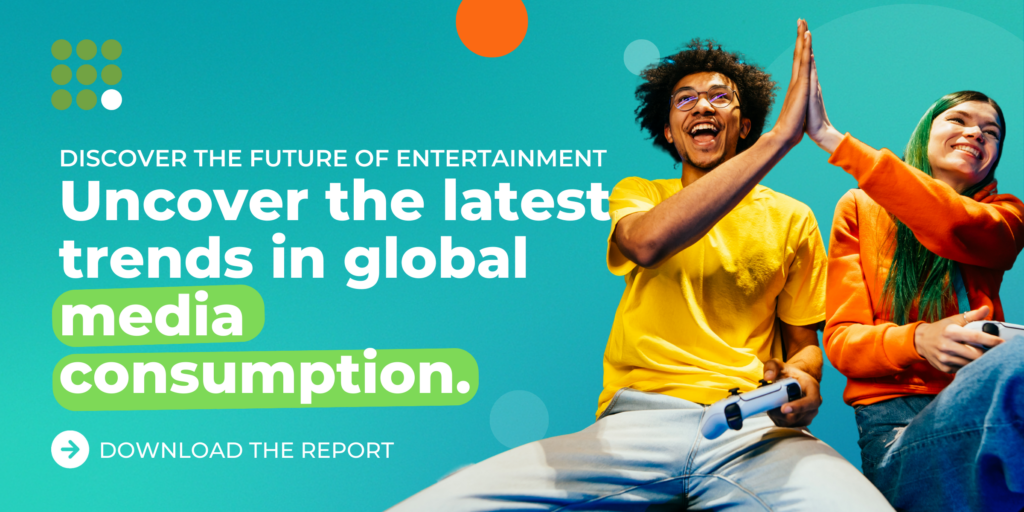






 Senior Marketing Executive
Senior Marketing Executive Sales & Marketing
Sales & Marketing General Manager PR -Internal Communications & Government Affairs
General Manager PR -Internal Communications & Government Affairs Vital Strategies
Vital Strategies
 Customer Intelligence Director
Customer Intelligence Director